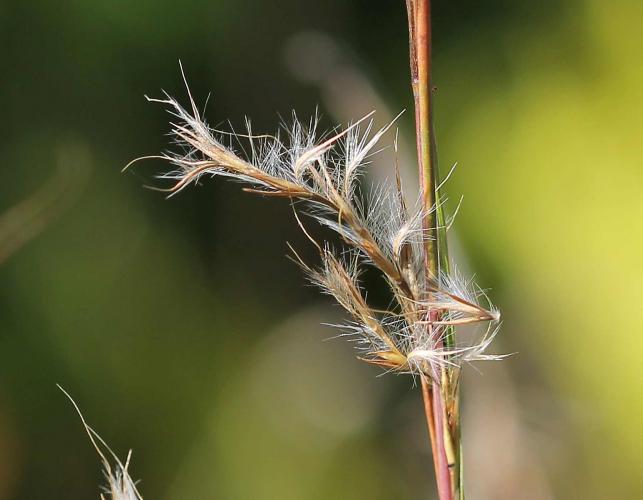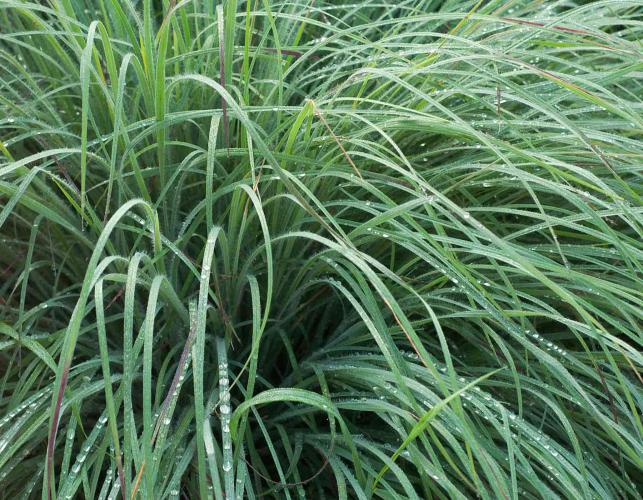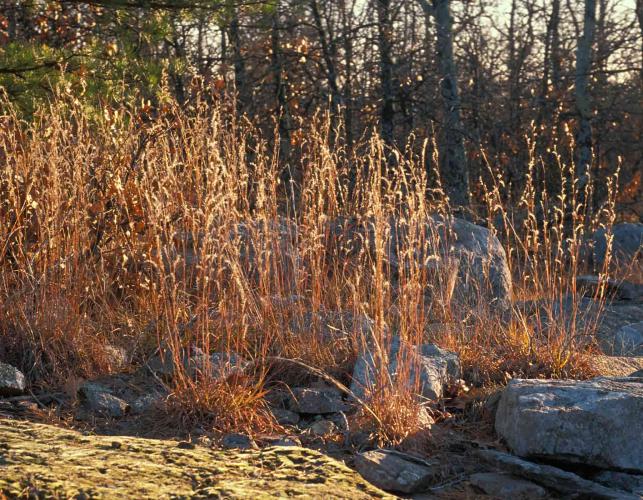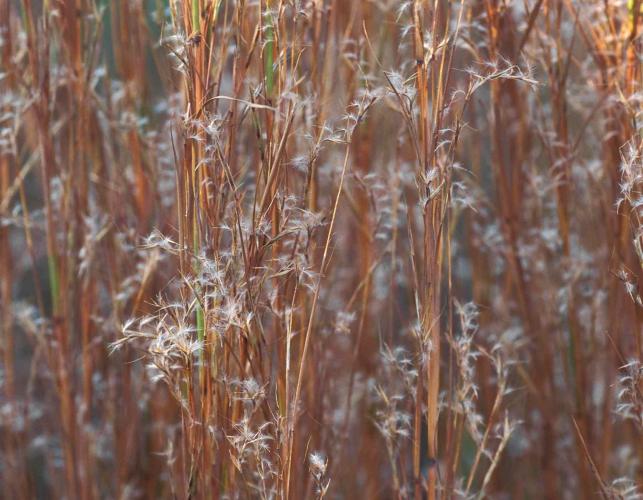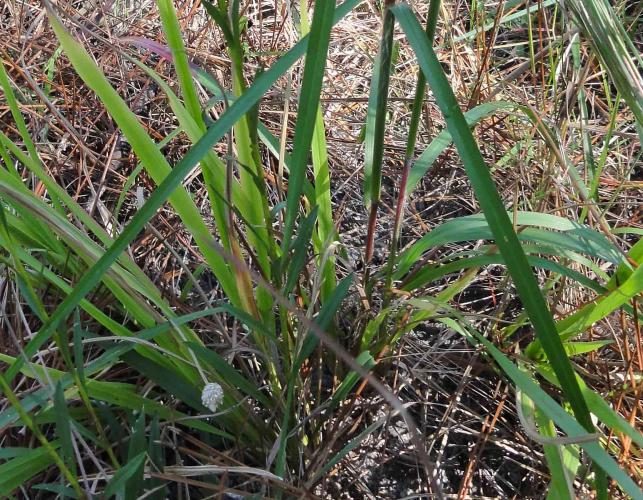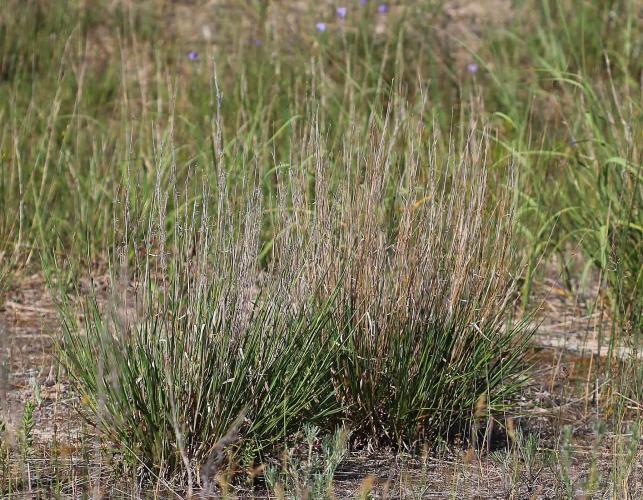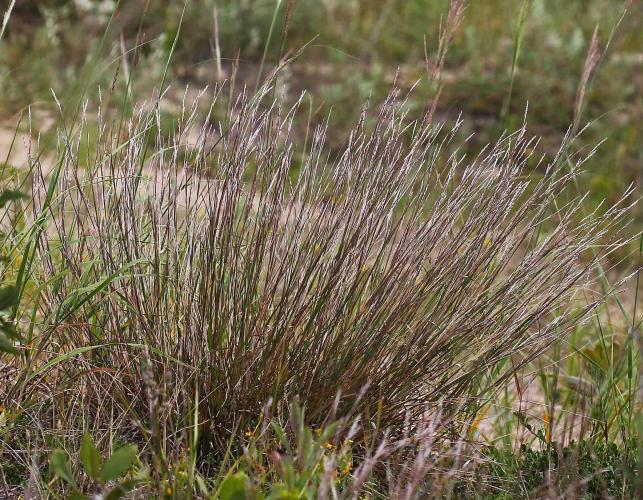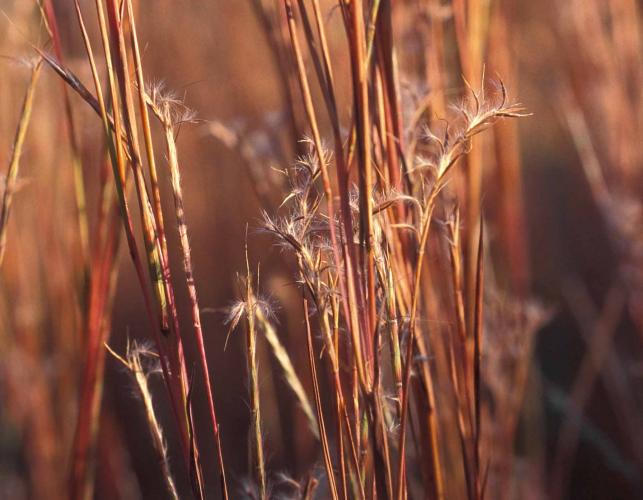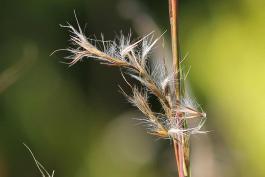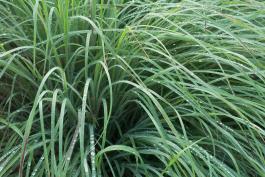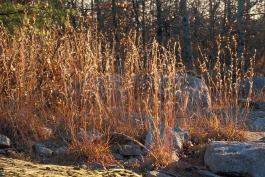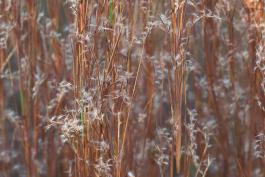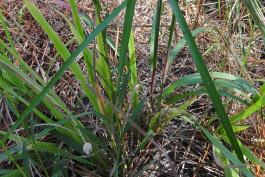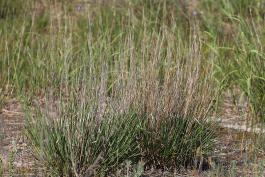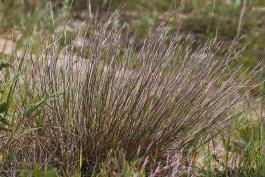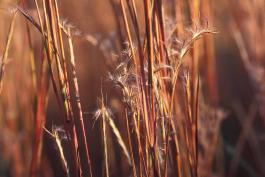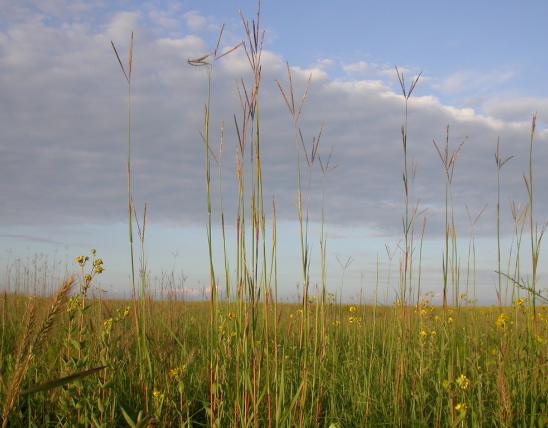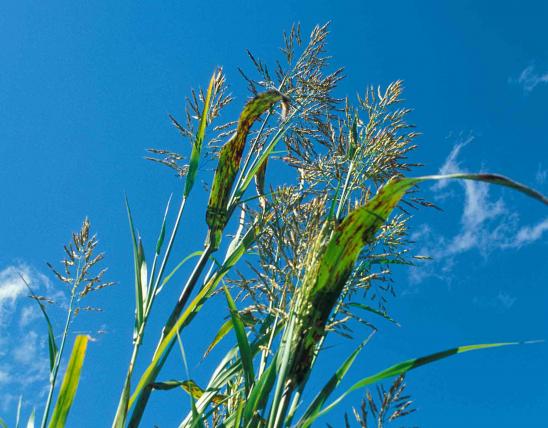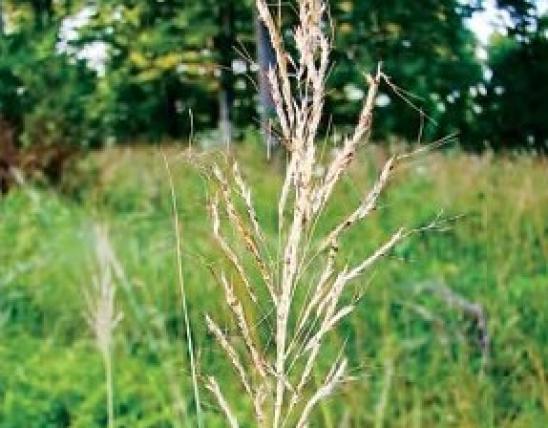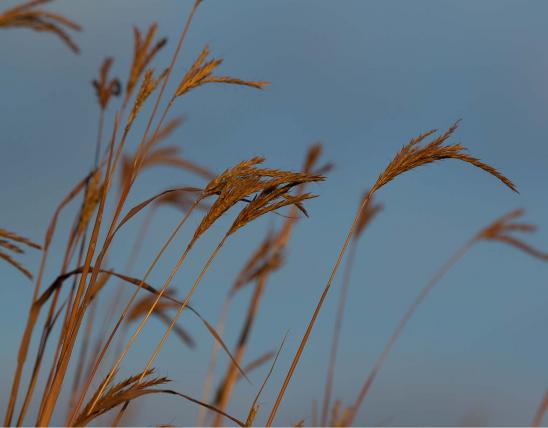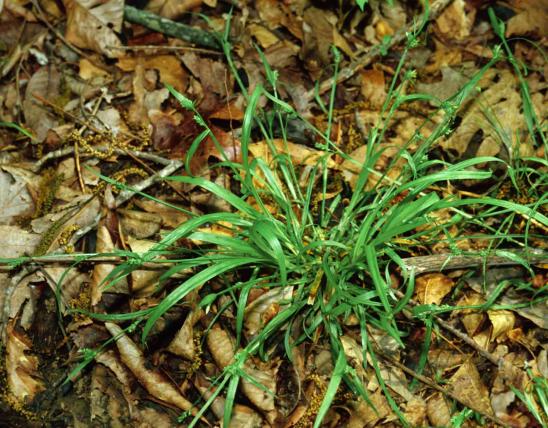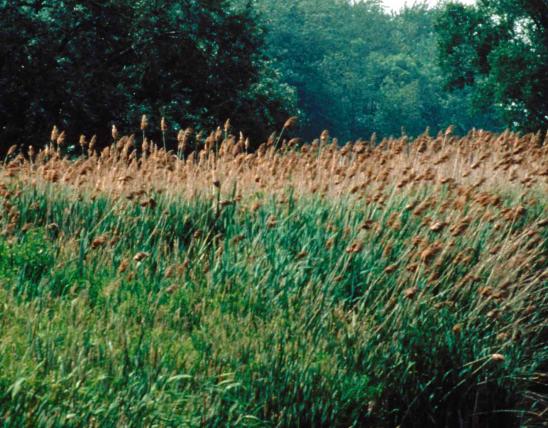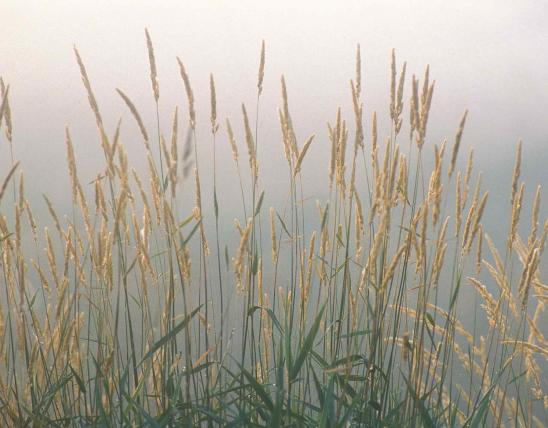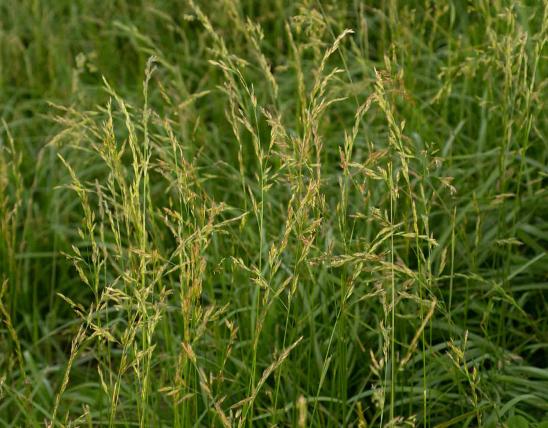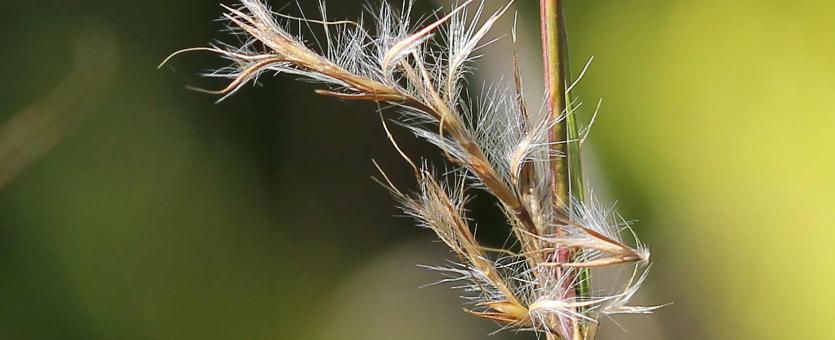
Little bluestem is a native perennial bunch grass with flowering stalks reaching 1–4 feet tall. A warm-season grass, it does most of its growth during the hottest part of summer. Leaves are green, about ¼ inch wide; the bases are typically bluish, hence the name. In fall, the leaves turn coppery. Flowering stems branch toward the tip, rising above the leaves; flower clusters are soft, usually somewhat curved, 1–3 inches long; when mature they are tan or grayish white and fluffy. Flower heads develop August–October.
Little bluestem is a highly variable species that, in the past, has been divided into many varieties, forms, and subspecies. Sometimes the differences are striking from site to site and even within a single population; some plants are bluish gray with a waxy coating while others are green and lack the coating. The amount of hairiness can vary, too, among other traits.
Habitat and Conservation
Status
Human Connections
Ecosystem Connections
